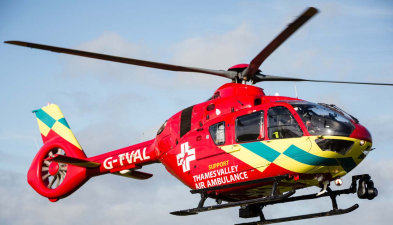Air medical services refer to the use of aircraft, including fixed-wing aircraft and helicopters, to provide a variety of medical services to patients during aeromedical evacuation and rescue operations, in particular pre-hospital, emergency and critical care.

Air medical services refer to the use of aircraft, including fixed-wing aircraft and helicopters, to provide a variety of medical services to patients during aeromedical evacuation and rescue operations, in particular pre-hospital, emergency and critical care.

Helicopter medical ambulance procedures:
- Provision of medical personnel, such as Taiwan, China, ambulance helicopter to perform air emergency ambulance or air referral, in addition to the pilot, at least one air ambulance personnel to perform ambulance randomly. Air ambulance personnel should have one of the following qualifications: doctor, paramedic, senior ambulance technician, intermediate ambulance technician;
- The air ambulance helicopter performs the air referral, and the air ambulance personnel shall dispatch doctors or paramedics at random by the hospital requesting the air referral according to the needs of the patient's condition, or coordinate the dispatch of doctors or paramedics by the hospital receiving the referral.
When does a patient need air ambulance service?
While the reasons for calling an air ambulance may vary, common situations in which a patient may require medical air transport services are as follows:
- They require transportation from a remote or rural location to a hospital for treatment.
- They’re going from one hospital to another for specialized care.
- They need to get to a hospital near home from a vacation spot.
- They need to travel from their hospital room to an ICU center quickly.
- They need transportation from a rural medical facility to a specialized care facility in another city.
Aeromedical rescue costs:
According to the market price of helicopter service, the cost of an hour is about 40,000 yuan to 70,000 yuan, and the starting charge is one hour, and the excess part is charged by 0.5 hour unit. At present, in order to serve the people and let the aviation rescue services benefit the masses, many operating companies have also launched civilian price helicopter rescue services for customers in need to choose.
The challenge of air rescue
Although air rescue is fast and efficient, it also faces some challenges, such as high operating costs, the impact of adverse weather conditions on flight, and the high skill requirements for pilots and rescue personnel. These factors cause air rescue to be carried out under strict safety management and professional operation.
Rules and procedures for applying for an air ambulance
Rules for Requesting an Air Ambulance
- Determine Medical Necessity: The request should be based on a medical assessment that confirms the need for rapid transport to a medical facility that cannot be delayed by ground transport. Common reasons include severe trauma, cardiac emergencies, stroke, or critical conditions in remote areas.
- Patient Stability: Consider the patient’s stability and whether they can be safely transported by air. Not all patients are suitable for air transport due to factors like severe weather conditions or certain medical complications.
- Communication: Clear and continuous communication between the requesting party, air ambulance provider, medical team, and receiving hospital is crucial. This ensures that everyone is aware of the patient’s condition and any special requirements.
- Authorization and Consent: Obtain the necessary authorizations, which may include insurance approvals, consent from the patient or their legal guardian, and clearance from the receiving facility.
- Coordination with Local Authorities: Coordination with local emergency services, air traffic control, and hospital landing zones is essential for smooth operation.
Steps for Making an Air Ambulance Request
- Initial Contact:
- Contact the air ambulance provider directly, often through a dedicated emergency phone line or service coordinator.
- Provide essential details: patient’s name, location, age, condition, and reason for the request.
- Assessment and Triage:
- A medical professional will typically assess the patient’s condition to determine if air transport is appropriate.
- Confirm if the patient’s condition meets the criteria for air ambulance use.
- Provide Detailed Information:
- Share the patient’s medical history, current diagnosis, and any special medical equipment or medication needs.
- Indicate any specific care required during transport, such as ventilator support, cardiac monitoring, or specialized medical staff.
- Logistics Planning:
- Coordinate logistics, including the pick-up and drop-off locations, and confirm the landing zone details at the receiving facility.
- Schedule the flight, taking into account weather conditions and the availability of the aircraft and crew.
- Patient Preparation:
- Prepare the patient for transport, ensuring they are stable and have all necessary medical support ready for the journey.
- Ensure all medical documents, including patient records and transfer forms, are prepared and accompany the patient.
- Coordination with Receiving Facility:
- Confirm bed availability and readiness at the receiving hospital.
- Communicate with the receiving medical team to provide updates on the patient’s condition during transport.
- Confirm and Execute the Mission:
- Confirm all details, including flight clearance, patient condition, and communication channels.
- The air ambulance team will then execute the transport, providing continuous care during the flight.
- Handover and Follow-Up:
- Upon arrival, the patient is transferred to the receiving medical team with a full handover of care.
- Follow up on any additional documentation or coordination required post-transport.
These steps ensure that an air ambulance request is managed efficiently, prioritizing patient safety and continuity of care throughout the transport process.


